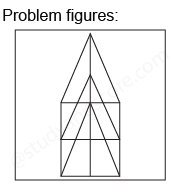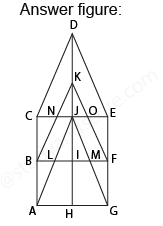How many triangles and parallelograms are there in the following figure?

Explanation

After labelling the figure, we get the following,
Total number of triangles in the figure is 8 + 6 + 4 + 2 + 1 = 21
Also we need to count the number of parallelograms in this figure,
Total number of parallelograms in the figure is 2 + 4 + 4 + 1 + 4 + 1+ 1 =17
Hence option A is correct.
- Share with your friends! -
Login to post your comment here...
- or with social Account -